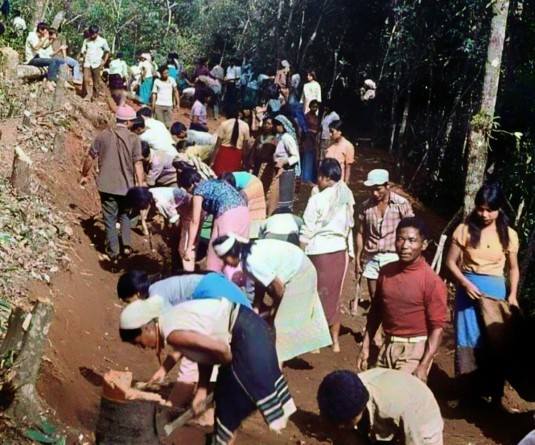
Lipichem
Kiphire | January 8
Kiphire is considered as the largest maize grower and producing district in the State. For nearly a decade now, farmers from this remote district of Nagaland produce at least 10-12 lakh kilos of surplus maize from one jhum cycle.
Across India, maize production is growing faster than that of all other cereals, thanks to its growing demand as poultry feed, as well as for human and industrial consumption.
Farmers here grow two varieties of maize- the indigenous one which is white in color and the yellow variety provided by the agriculture department. Even though the indigenous maize variety is known for being pest resistant and can be stored (preserved) for a couple of years, it fetches lesser amount.
The farmers therefore grow the variety provided by the department which however cannot be stored even for a few months.
Not even a single processing unit
With not even a single processing unit in the district, the harvested crops are sold to local traders at a giveaway price, who then transport it to the commercial hub Dimapur.
The harvests have been so bountiful over the years that traders are willing to shell out advance payment to farmers and book the produce well ahead of harvest time to make sure that they get the required share for consignment.
Traders are known to buy the corn at Rs 10-11 per kilo from the field and then sell it at Rs 12-13 per kilo in Dimapur. The maize of Kiphire is purely organic since farmers shy away from pesticides or fertilizers.
Besides the sad irony that a district in Nagaland producing such large volume of maize would not even have a small processing unit, this is a bit of good news for the State which is not able to stand on its own feet despite rich natural resources handed on a plate.
Is Kiphire maize leaving carbon footprints?
From an environmentalist’s perspective, there is a major side-effect over such large production of maize in a district where more than 80% of the produce are surplus and have to be transported outside.
Asserting on how maize production was leaving carbon footprints, environmentalists have calculated that in the course of 315 kilometers of journey between Kiphire and Dimapur, traders burn around 3500-4000 liters of fossil fuel (petrol or diesel) in one season while transporting the maize.
Agricultural practices along with domestic fossil fuel combustion have a major impact on the global C and nitrogen (N) cycles, possible leading to the global temperature increase of up to 0.17 C per decade since 1950, studies have revealed.
This maize is then processed in different factories, exported to neighboring states and back home (Kiphire) in the form of livestock feeds or for human consumption, eg flour-which also burns around 500-600 liters of fuel in a year.
These activities creating greenhouse gases in the atmosphere could be avoided if the State government is industrious or enterprising enough to set up small corn processing units which are environmentally friendly and at the same time train local youth to run these units, environmentalists suggest.
Not only will it help in reducing the carbon emission but it will also boost the economy of the locals, the district and the State, they added.
Maize produces oxygen, absorbs carbon gas
If the footprints of maize produce from Kiphire district is carbon emission, it also cannot be overlooked that maize is deemed as the ”air purifier” and much more efficient than forestland, the time-honoured “green lung”.
Maize produces a great deal of oxygen, absorbs large quantities of carbon gas and scavenges carbon from carbon gas in the soil, stopping air pollution having a negative impact on the greenhouse effect. As maize grows, it absorbs substantial quantities of nitrates absorbed from the soil.
Studies have found that one hectare of maize provides four times more oxygen than a hectare of forestland. At the same time it absorbs four times more carbon gas, i.e. between 20 and 30 tonnes per hectare.
Even after the plant has “died” and decomposes after harvest, it still has a positive effect, keeping the carbon captive in the soil.
Some key points here for the Nagaland government would be to assess the feasibility of maize processing in the State, identify suitable technology and promote processing of this crop in to value added products.






